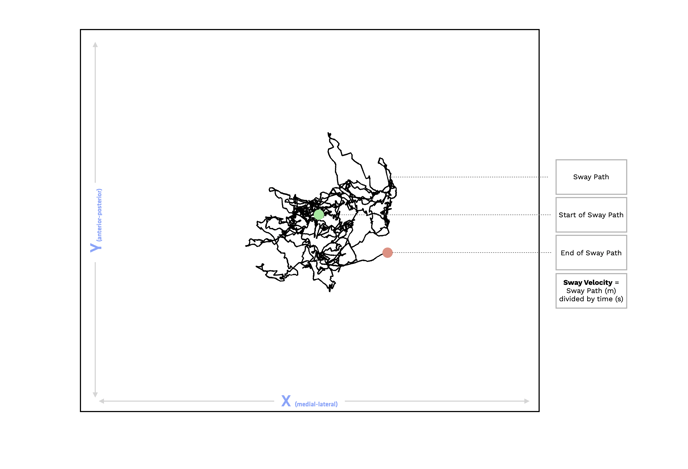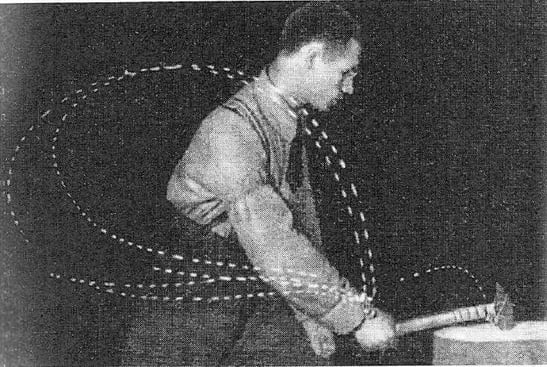This article discusses the existing rationale, literature, and real-world utilization of balance tests for evaluating human movement, capability, and function.
Balance is a central and complex aspect of human movement - it requires the input from multiple sensory systems, musculoskeletal responses and coordination by the brain and spinal cord.
People desire “good balance” for obvious reasons including reduced risk of falling and improved athletic and day-to-day physical performance. Balance capabilities are not static nor inherent. They can be improved through exercise and can be adversely impacted by a variety of different underlying physical ailments, including:
- Musculoskeletal injuries or deficits
- Brain injuries & neurological disorders
- Sensory disorders
Balance testing, therefore, is an important tool in movement health that can guide improvement and medical interventions when necessary.
Check out our Balance Assessment Overview white paper for additional discussion and considerations for balance testing.
Balance can be simply understood as an individual's ability to maintain their center of mass over their center of pressure. While this may sound simple, it is actually the extremely complex coordination of different systems that allow us to balance. The basic ability of humans to stand upright on two feet (let alone on one) is a complicated and unstable condition.
As gravity acts constantly on the human body challenging balance, different systems of the human body coordinate to counteract these forces and maintain balance. Our nervous system, musculoskeletal system, vestibular system, and ocular (vision) system all work in a coordinated effort to simply allow us to stand upright or walk without falling over. Even in a typical upright dual stance (two feet), there is a measurable amount of "sway" or center of pressure movement in healthy individuals.

Perhaps one of the simplest measures from balance tests, the total amount of movement or sway is utilized often in the research (see sway path image above), and can even be split into multiple different parts. For example, the overall movement or sway path can be dissected into medial-lateral sway (side to side) and anterior-posterior sway (front to back). These variables can be further evaluated as sway velocities, by measuring the amount of movement (sway path) by the total time of the test, giving us more information about the timing of forces during balancing tasks.
Another key piece of information that can be measured during balancing tasks is often referred to as variability or complexity. This is an interesting concept as it relates to movement, as one might assume more variability (meaning less consistency) in movement is a bad thing. But research actually suggests that healthier individuals and in many cases more skilled individuals actually show greater variability or complexity. This concept of complexity holds true in a variety of measures of the complex human system, for example, heart rate variability. More variability or complexity is better as it represents a more automated process or unconscious task which often reflects better health.

This concept as it relates to movement can be a bit more easily digested by understanding that greater complexity in how a movement is performed doesn't necessarily mean greater variability in the end-result of a movement. For example in the picture above, the path of the swing and hammer may be relatively variable, but the end result or outcome is the same: the hammer accurately striking its target. In other words, skilled individuals do consistently perform better, but exactly how they do this is less consistent and more complex.
Measurement of the ‘complexity’ of dynamic physiological signals is an increasingly important assessment tool [17, 18]. Heart rate variability is familiar to many people, but other signals like respiration and EEG are also studied. In general, high complexity of response is associated with better health.
Countless studies have measured and analyzed different variables related to balance and have reported on a variety of reliable and valid measures. A 2015 research study out of the University of Calgary assessed single limb measures of balance and found significantly greater medial-lateral sway in a population of individuals with a previous knee injury than that of a healthy cohort of individuals [1]. The injured group also recorded a lower variability of sway compared to uninjured individuals. So those less consistent, or perhaps better thought of as the more complex coordination of balance, represented the healthier group of individuals. A 2006 study found single leg balance to be a significant predictor of ankle injury in basketball athletes, with a 2012 meta-analysis supporting, concluding that postural sway is associated with a significantly increased risk of ankle injury [14, 15]. A 2019 study found in their analysis that anterior-posterior sway was higher in concussed individuals 3 days post-concussion, but had returned to baseline at the 21-day mark [8]. However, measures of complexity continued to be lower for individuals in the concussed group for up to 90 days post-concussion!
The research suggests that balance is a fundamental element of performance as well, with evidence from multiple sports demonstrating significant correlations between balance ability and agility, strength, and competitive level [3, 7, 10]. Objective measures of balance have great utility for practitioners both identifying at-risk individuals, as well as providing feedback post-injury or surgery during the rehabilitative process. Balancing tasks have long been utilized for concussion testing in sport, but its application goes far beyond athletics [11]. Complexity has shown to be a valid marker for a multitude of other diseases and disorders such as multiple sclerosis, scoliosis, Parkinson's disease, and fall risk [2, 6, 9].
The complexity of human movement is difficult to measure in a reliable and practical way. Balance tests are able to meet these demands because of both the simplicity of performing the tests as well as the complex coordination of merely standing upright. Center of pressure measures of ground reaction forces provide insight into both global measures of how well someone is able to balance, as well as a more complete understanding of how they complete that task. As a result, balance tests can be utilized in a reliable and practical way to better understand the complexity of human movement.
- Such a simple test allows for assessment to be done across all different populations regardless of physical ability or skill.
- While simple on the surface, balancing (like all movement) is an extremely complex coordination of different systems of the human body.
- The force plate is able to objectively collect both quantitative output, but perhaps more importantly, strategy data about how an individual is balancing.
- The reliability of balancing tests are high, as is the reliability of the specific variables Sparta utilizes.
- The ease and duration of the test make it extremely practical. Balancing is also a low-intensity test and can be done much more quickly post-injury or surgery than other assessments allowing for more objective use in rehabilitation.
Research References:
- Baltich, Jennifer, et al. "The impact of previous knee injury on force plate and field-based measures of balance." Clinical Biomechanics 30.8 (2015): 832-838.
- Busa, Michael A., and Richard EA van Emmerik. "Multiscale entropy: A tool for understanding the complexity of postural control." Journal of Sport and Health Science 5.1 (2016): 44-51.
- Hammami, Raouf, et al. "Associations between balance and muscle strength, power performance in male youth athletes of different maturity status." Pediatric Exercise Science 28.4 (2016): 521-534.
- McGuine, Timothy A., et al. "Balance as a predictor of ankle injuries in high school basketball players." Clinical Journal of Sport Medicine 10.4 (2000): 239-244.
- Meshkati, Zohreh, et al. "Reliability of force-platform measures of postural sway and expertise-related differences." Journal of sport rehabilitation 20.4 (2011): 442-456.
- Morrison, S., et al. "Relation between risk of falling and postural sway complexity in diabetes." Gait & posture 35.4 (2012): 662-668.
- Muehlbauer, Thomas, Albert Gollhofer, and Urs Granacher. "Associations between measures of balance and lower-extremity muscle strength/power in healthy individuals across the lifespan: a systematic review and meta-analysis." Sports medicine 45.12 (2015): 1671-1692.
- Purkayastha, Sushmita, et al. "Balance Testing Following Concussion: Postural Sway versus Complexity Index." PM&R 11.11 (2019): 1184-1192.
- Schmit, Jennifer M., et al. "Deterministic center of pressure patterns characterize postural instability in Parkinson’s disease." Experimental brain research 168.3 (2006): 357-367.
- Sekulic, Damir, et al. "Gender-specific influences of balance, speed, and power on agility performance." The Journal of Strength & Conditioning Research 27.3 (2013): 802-811.
- Sosnoff, Jacob J., et al. "Previous mild traumatic brain injury and postural-control dynamics." Journal of athletic training 46.1 (2011): 85-91.
- Straube, A., et al. "Dependence of visual stabilization of postural sway on the cortical magnification factor of restricted visual fields." Experimental brain research 99.3 (1994): 501-506.
- Trojian, Thomas H., and Douglas B. McKeag. "Single leg balance test to identify risk of ankle sprains." British journal of sports medicine 40.7 (2006): 610-613.
- Wang, H., Chen, C., Shiang, T., Jan, M., & Lin, K. (2006). Risk-Factor Analysis of High School Basketball–Player Ankle Injuries: A Prospective Controlled Cohort Study Evaluating Postural Sway, Ankle Strength, and Flexibility. Archives of Physical Medicine and Rehabilitation, 87(6), 821-825.
- Witchalls, Jeremy, et al. "Intrinsic functional deficits associated with increased risk of ankle injuries: a systematic review with meta-analysis." Br J Sports Med 46.7 (2012): 515-523.
- Chen, B., Liu, P., Xiao, F., Liu, Z., & Wang, Y. (2021). Review of the Upright Balance Assessment Based on the Force Plate. International Journal of Environmental Research and Public Health, 18(5), 2696.
-
Stergiou, N. (2016). Nonlinear Analysis for Human Movement Variability (1st ed.). CRC Press.
-
Costa M, Goldberger AL, Peng CK. Multiscale entropy analysis of complex physiologic time series. Phys Rev Lett. 2002 Aug 5;89(6):068102.
